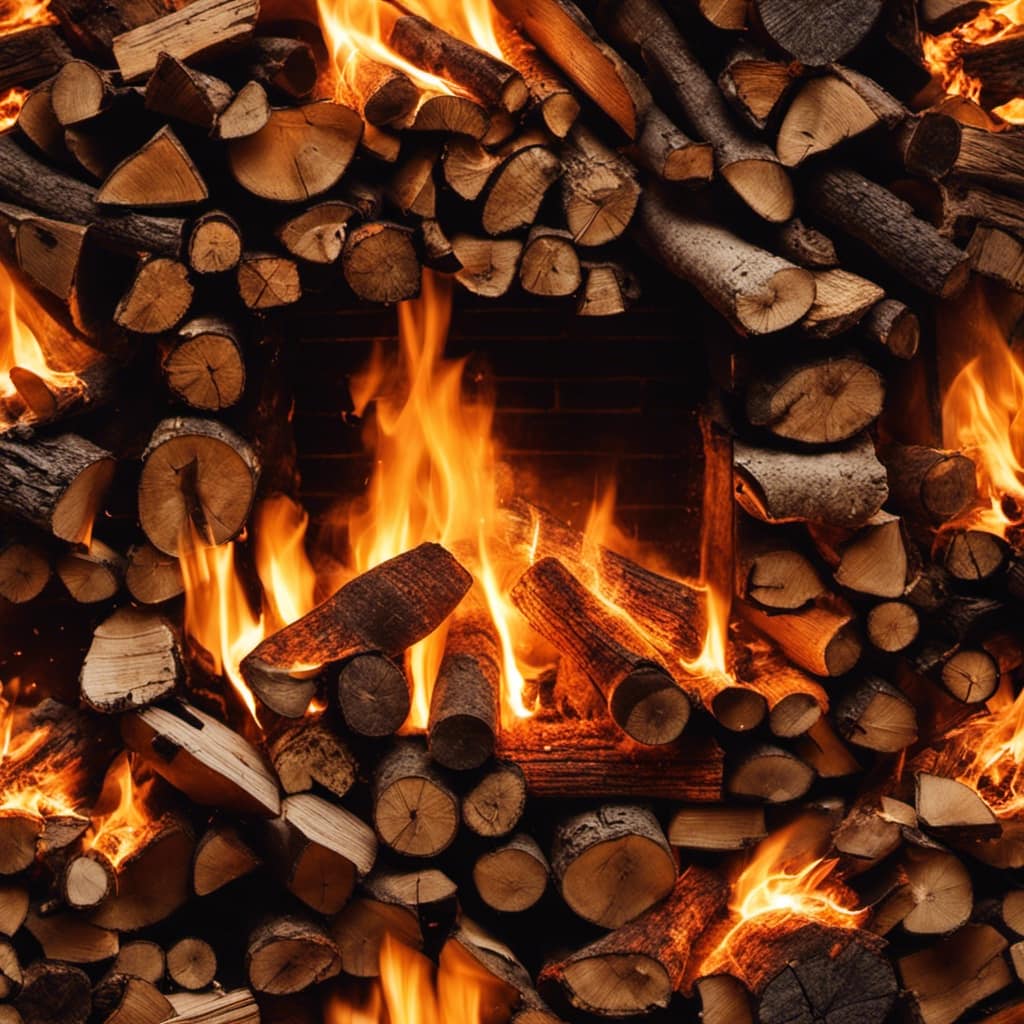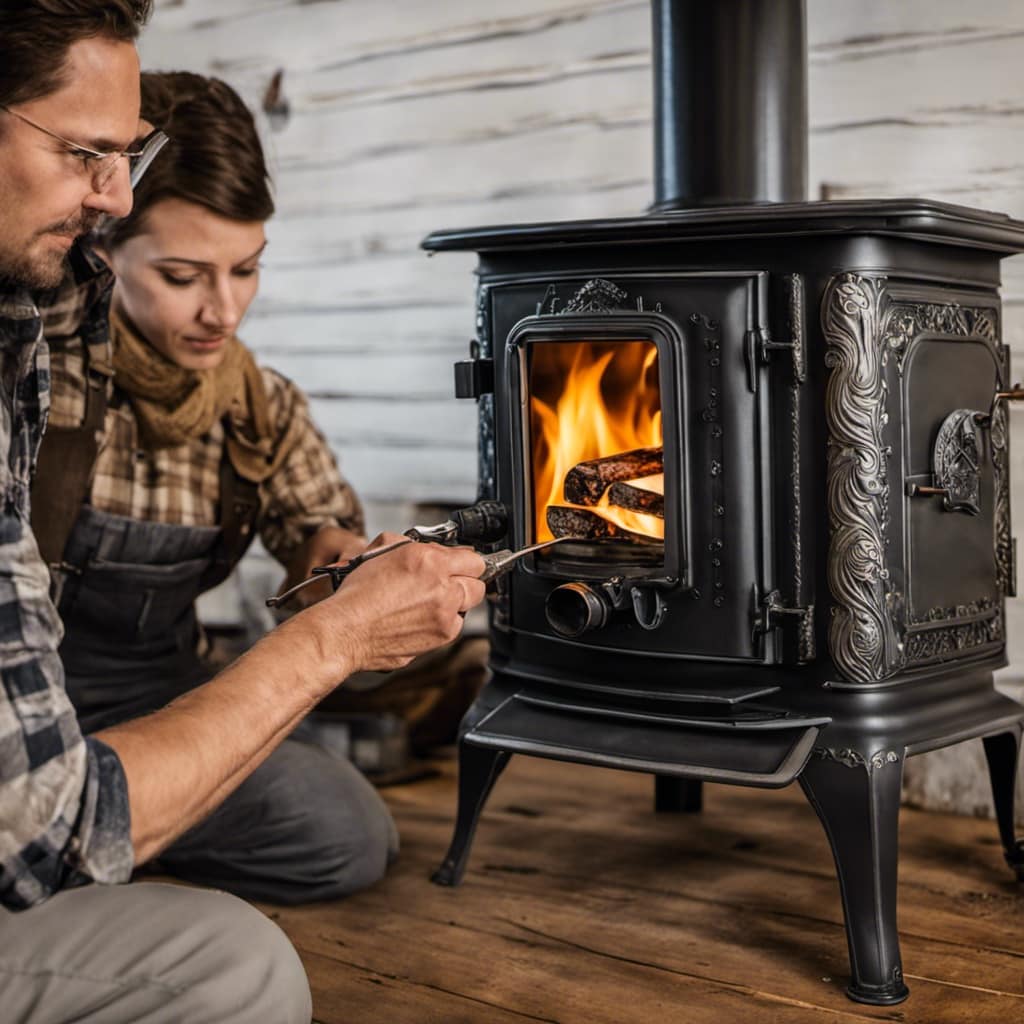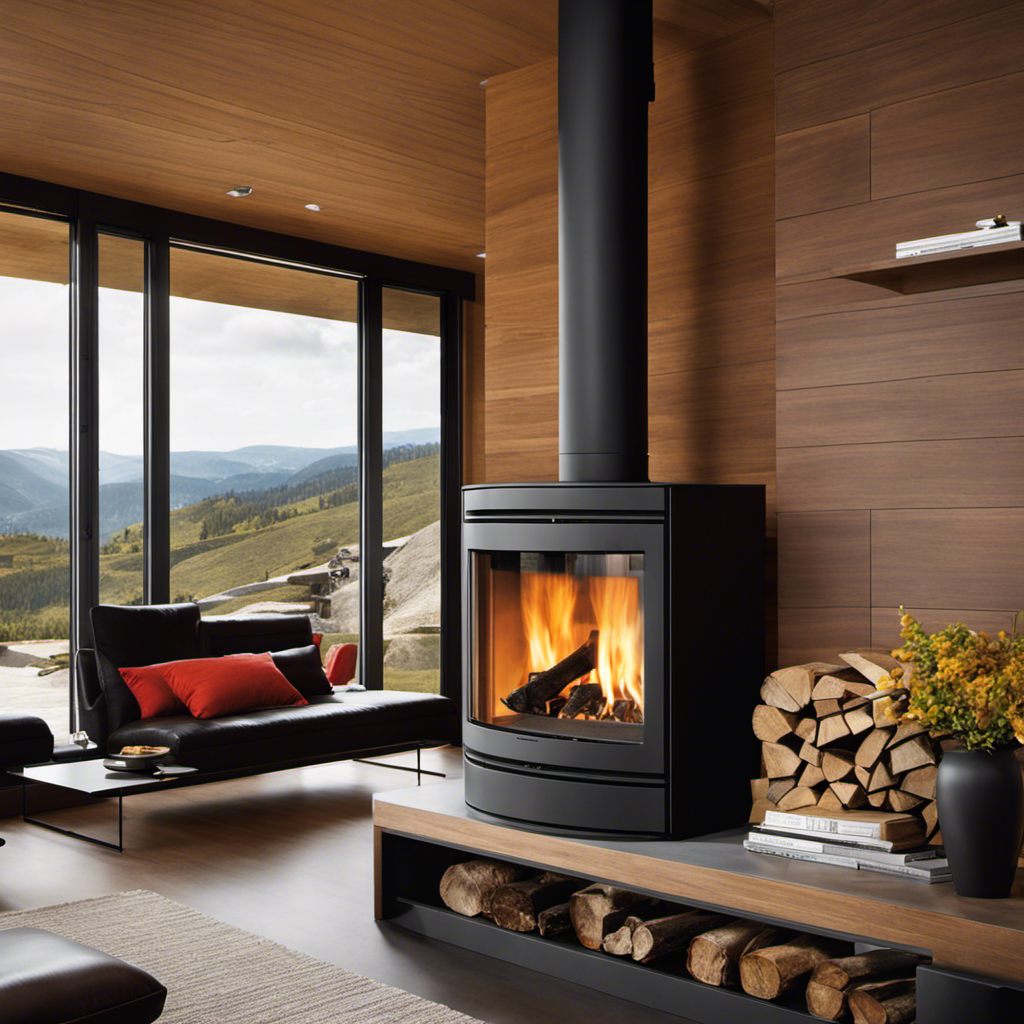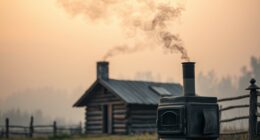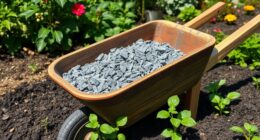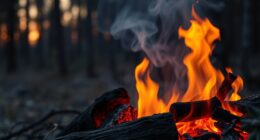You might be wondering if redirecting the exhaust from a wood stove through the wall and up along the exterior of your home is a difficult task. However, do not worry, as I am here to walk you through each step of the process.
In this article, I’ll show you how to choose the right location, select the proper materials, plan and prepare the wall opening, and install the vent pipe and insulation.
So let’s get started and make your wood stove venting a breeze!
Key Takeaways
- The optimal location for venting a wood stove is one that follows the shortest and most direct route to the exterior, avoiding obstructions such as windows, doors, or overhangs.
- It is important to choose the proper venting materials, with stainless steel being the best option for durability and resistance to corrosion. Clearance from combustible materials should also be ensured to prevent fire hazards.
- Planning and preparing the wall opening should be done accurately, with precise measurements and careful cutting using appropriate tools and safety gear.
- The installation of the vent pipe and insulation should be done carefully, ensuring proper fit and sealing of joints and connections. Proper airflow and draft control are important for efficient operation and reducing harmful byproducts.
Choosing the Right Location for Venting
I’m considering the best location for venting my wood stove to ensure proper air circulation and safety. When choosing venting options, it’s crucial to consider safety precautions.

The first step is to determine the optimal location for the stove, keeping in mind that the venting system should follow the shortest and most direct route to the exterior. It’s essential to avoid any obstructions such as windows, doors, or overhangs.
Additionally, the venting system should be installed at least three feet above any adjacent roofs or structures. This ensures proper draft and prevents any potential fire hazards.
It’s also crucial to check local building codes and regulations to ensure compliance and safety.
Selecting the Proper Venting Materials
I’ve researched and found that stainless steel is the best option for venting materials due to its durability and resistance to corrosion. When considering venting options for wood stoves, safety is of utmost importance. Here are some key safety considerations to keep in mind:

- Proper Clearance: Ensure that the venting system has the required clearance from combustible materials to prevent fire hazards.
- Sealing and Insulation: Use high-quality seals and insulation to prevent leaks and maintain optimum efficiency.
- Maintenance: Regularly inspect and clean the venting system to remove any build-up or obstructions that could hinder proper airflow.
Stainless steel venting materials offer several advantages, including their ability to withstand high temperatures and resist corrosion. Additionally, they provide a smooth inner surface, minimizing the accumulation of creosote.
Planning and Preparing the Wall Opening
Before proceeding with the installation, it is important to carefully measure and cut the wall opening to ensure a proper fit for the venting system. Measuring dimensions accurately is crucial to avoid any issues with the installation process. To facilitate this, I recommend using a tape measure and a level to ensure precision. Once the measurements are obtained, it’s time to cut the opening. This step requires caution and attention to detail. Using a reciprocating saw or a jigsaw, carefully cut along the marked lines to create the wall opening. Be sure to wear appropriate safety gear such as goggles and gloves during this process. By following these steps, you can ensure a proper fit for the venting system and ensure optimal performance of your wood stove.
| Step | Description | Tools Required |
|---|---|---|
| 1 | Measure dimensions accurately | Tape measure |
| 2 | Mark the cutting lines | Level |
| 3 | Cut the wall opening | Reciprocating saw or jigsaw |
| 4 | Wear appropriate safety gear | Goggles, gloves |
Installing the Vent Pipe and Insulation
Once the wall opening is cut, it’s important to install the vent pipe and insulation carefully to ensure proper functioning of the wood stove.
When it comes to insulation, there are different types to consider, each with their own pros and cons. Some common insulation types include fiberglass, mineral wool, and foam board.
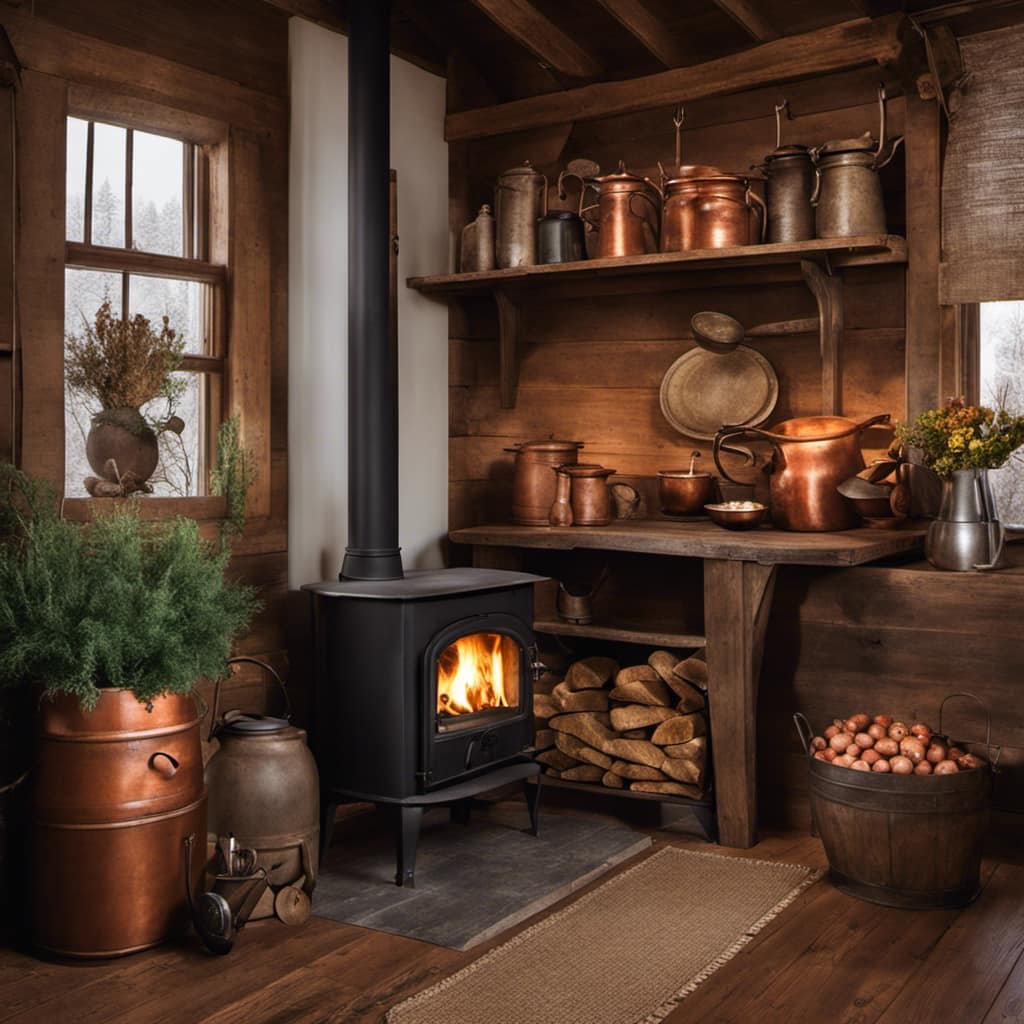
Fiberglass insulation is affordable and easy to install, but it can be a health hazard if not handled properly.
Mineral wool insulation provides excellent fire resistance and soundproofing, but it can be more expensive.
Foam board insulation offers high R-value and moisture resistance, but it can be more difficult to install.
To avoid common installation mistakes, make sure to properly seal all joints and connections, use appropriate fire-rated materials, and follow the manufacturer’s guidelines.
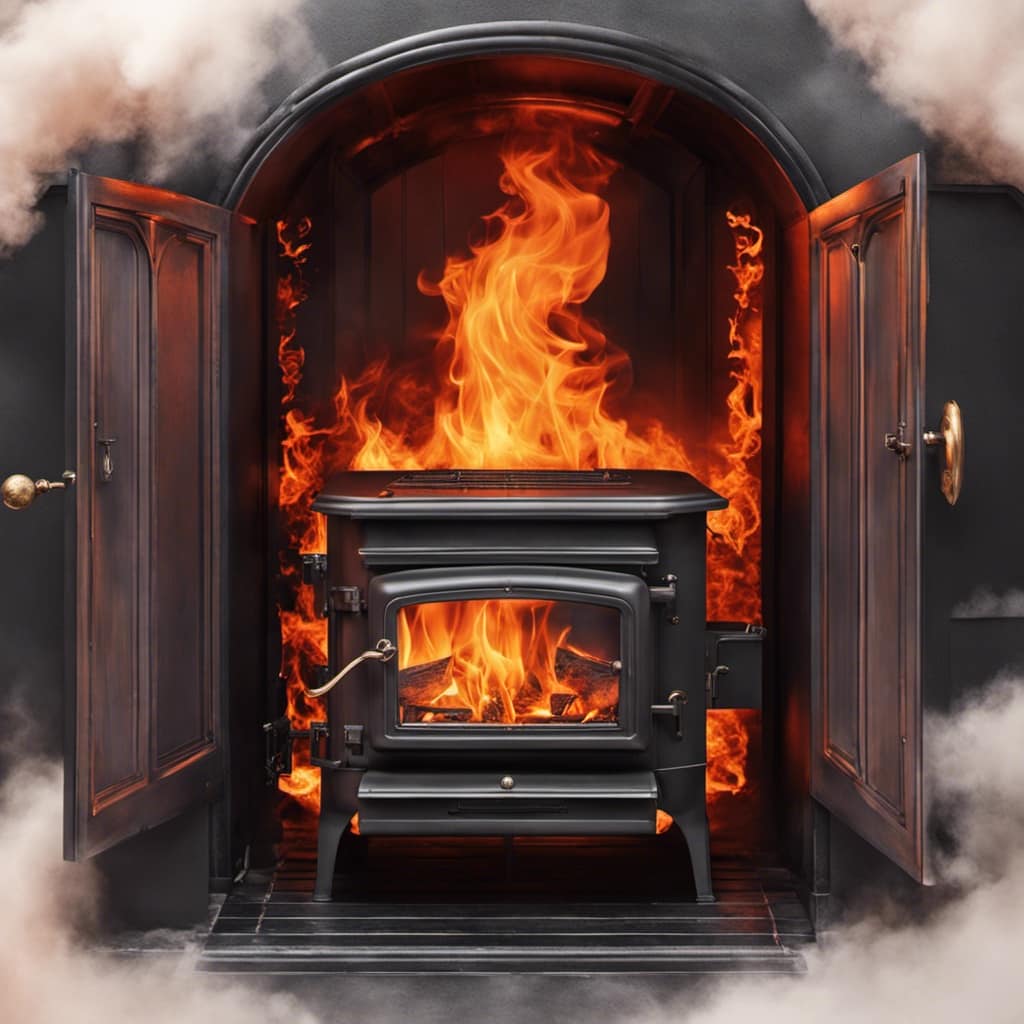
Ensuring proper airflow and draft control is crucial for the efficient operation of the wood stove.
Ensuring Proper Airflow and Draft Control
I always prioritize ensuring proper airflow and draft control when it comes to operating a wood stove for maximum efficiency.
Improving combustion efficiency and preventing smoke leakage are key elements in achieving this. To improve combustion efficiency, it’s crucial to have a well-designed stove with an efficient air intake system. This allows for a sufficient supply of oxygen to the fire, promoting complete combustion and reducing the production of harmful byproducts.
Additionally, proper draft control is essential. This involves adjusting the damper or air vents to regulate the flow of air into the stove, ensuring optimal burning conditions. By carefully managing the airflow, we can prevent smoke leakage into the room and ensure that the heat produced is utilized efficiently.
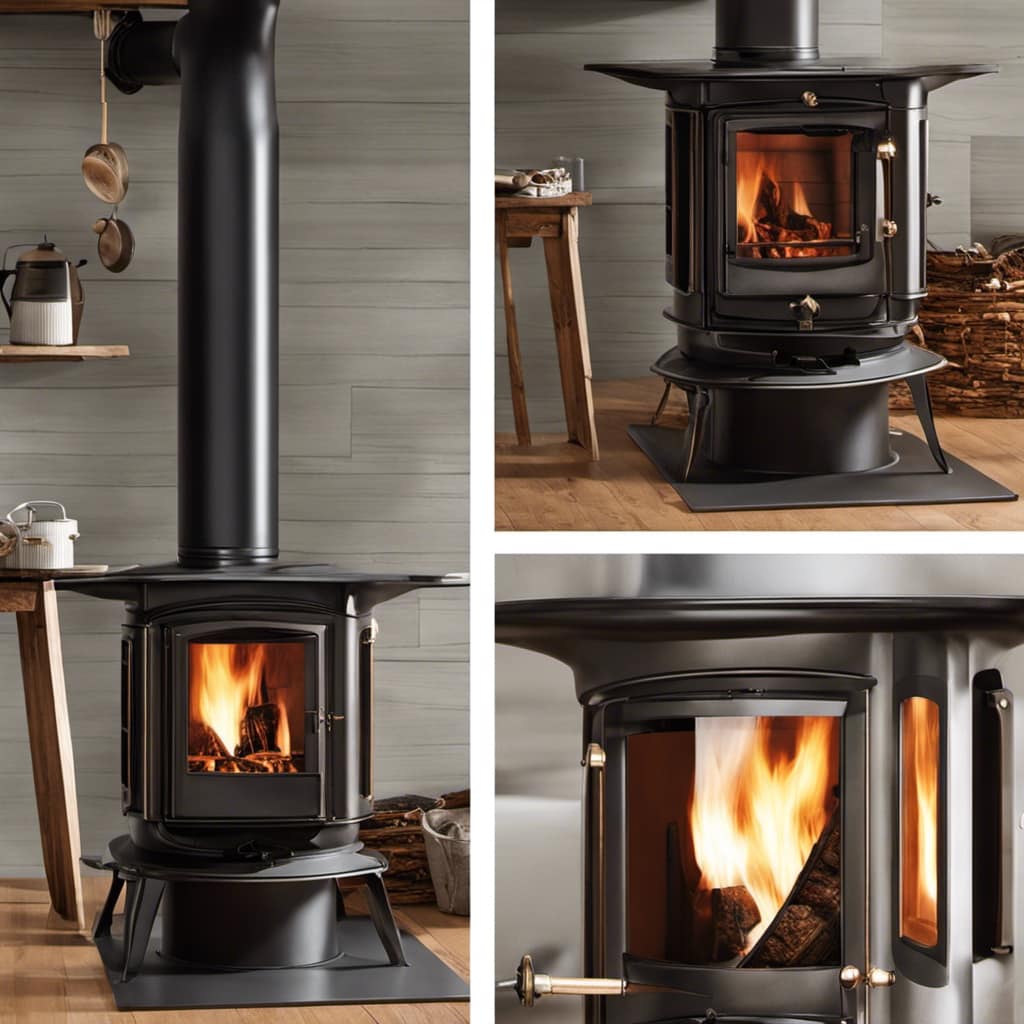
Is Smoke Coming Out of the Wood Stove Door a Sign of Improper Venting?
If you see wood stove smoke coming out of the door, it could indicate an improper venting system. To fix this wood stove smoke issue, ensure the stove and chimney are clean, the flue damper is open, and the damper is adjusted correctly. Proper ventilation is crucial for safe and efficient wood stove operation.
Frequently Asked Questions
What Are Some Common Mistakes to Avoid When Venting a Wood Stove Out the Wall?
When venting a wood stove out the wall, it is crucial to avoid common mistakes. Improper venting can lead to potential dangers such as carbon monoxide buildup and fire hazards.
Are There Any Specific Building Codes or Regulations That Need to Be Followed When Venting a Wood Stove Out the Wall?
When venting a wood stove out the wall, it is crucial to follow building code requirements and ventilation regulations. Failure to do so can lead to fire hazards and potential damage to your home.
How Often Should the Vent Pipe and Insulation Be Inspected and Maintained?
I recommend inspecting and maintaining the vent pipe and insulation for a wood stove regularly. The inspection frequency and maintenance schedule will depend on various factors such as usage, type of wood, and local regulations.
Can a Wood Stove Be Vented Out the Wall if There Is Already an Existing Chimney in the House?
Yes, a wood stove can be vented out the wall even if there is already an existing chimney in the house. However, there are alternative options to consider based on the specific circumstances.
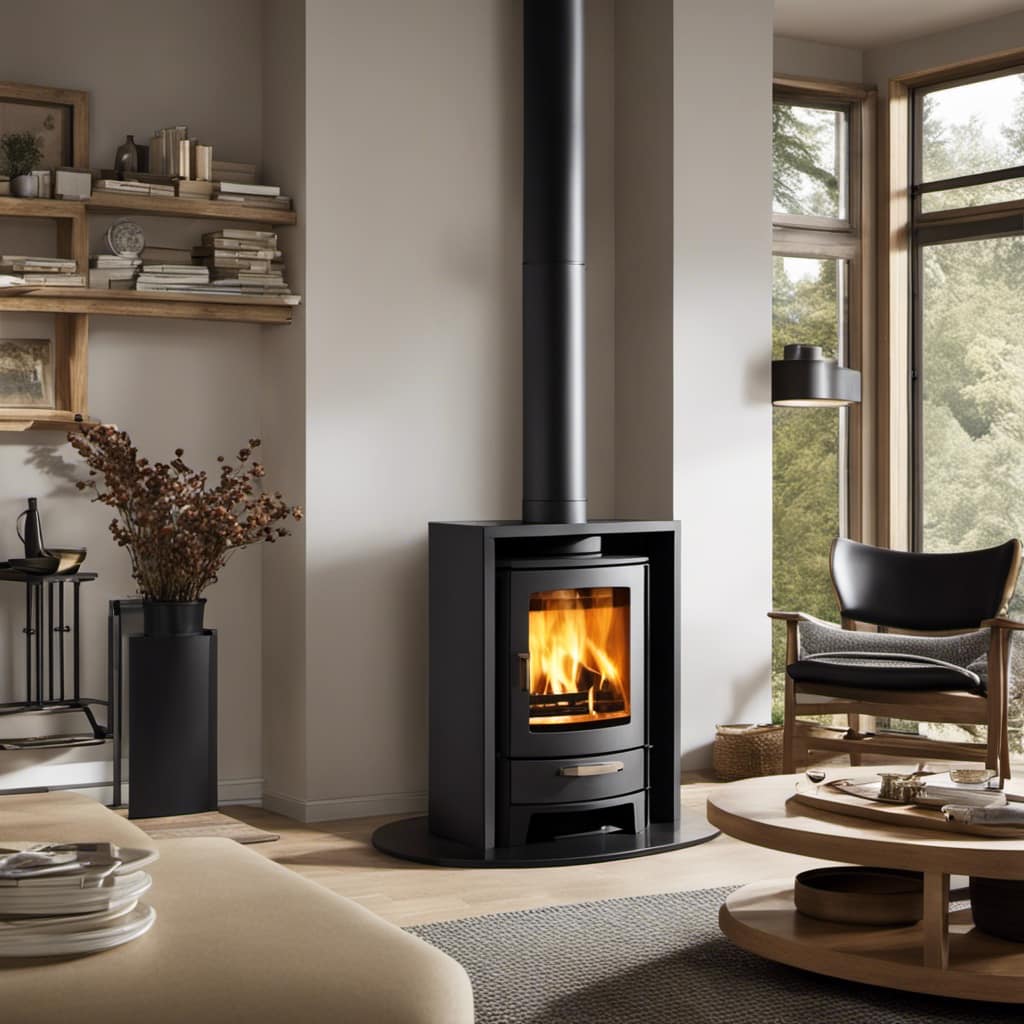
Are There Any Additional Safety Precautions That Should Be Taken When Venting a Wood Stove Out the Wall?
When venting a wood stove out the wall, it is crucial to take additional safety measures. Proper installation and maintenance of the vent pipe and insulation are essential to prevent fire hazards and ensure optimal performance.
Conclusion
In conclusion, venting a wood stove out the wall and up the side of the house requires careful planning and proper installation. The right location and venting materials are crucial for safe and efficient operation.
By ensuring proper airflow and draft control, you can create a harmonious dance between your wood stove and the outside world, where warmth and comfort embrace your home like a gentle waltz.
So, take the necessary steps to properly vent your wood stove and enjoy the rhythm of cozy fires on cold winter nights.
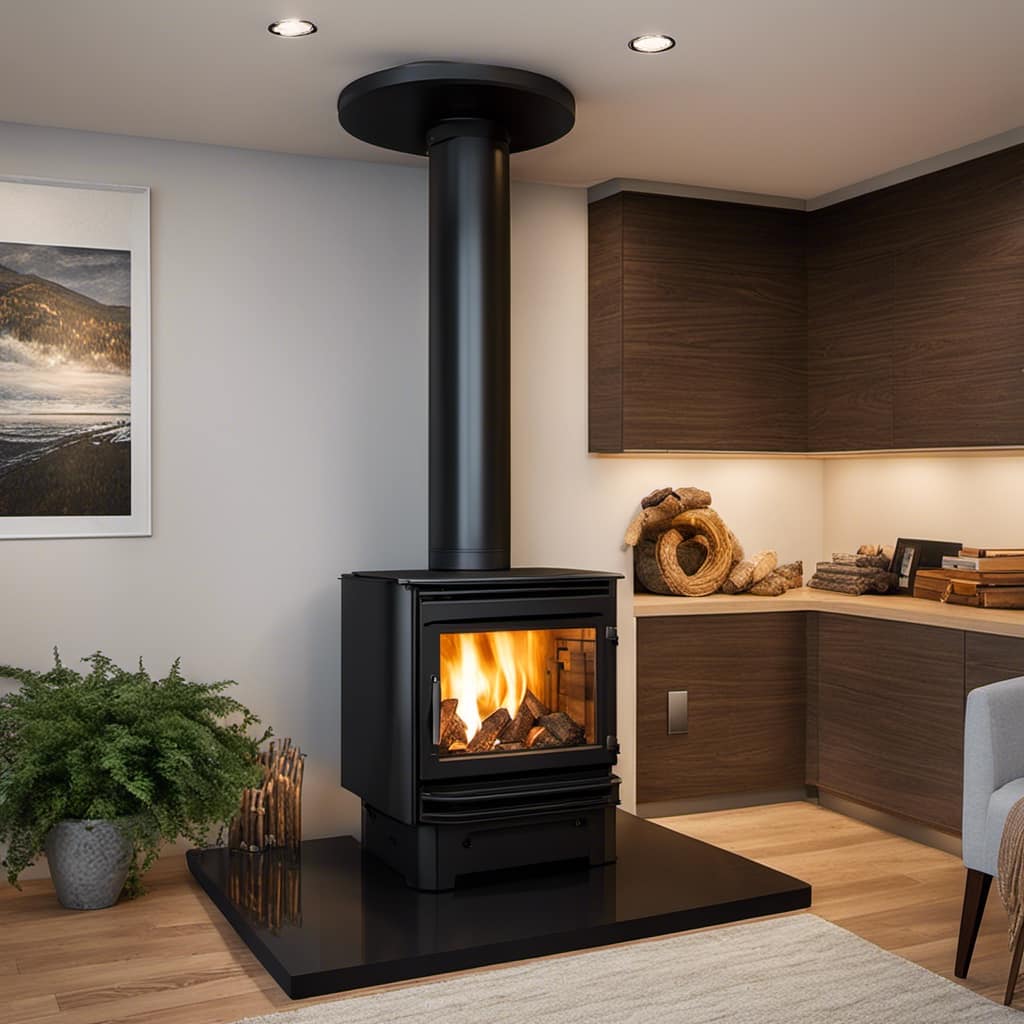
Growing up surrounded by the vast beauty of nature, Sierra was always drawn to the call of the wild. While others sought the comfort of the familiar, she ventured out, embracing the unpredictable and finding stories in the heartbeat of nature.
At the epicenter of every remarkable venture lies a dynamic team—a fusion of diverse talents, visions, and passions. The essence of Best Small Wood Stoves is crafted and refined by such a trio: Sierra, Logan, and Terra. Their collective expertise has transformed the platform into a leading authority on small wood stoves, radiating warmth and knowledge in equal measure.

